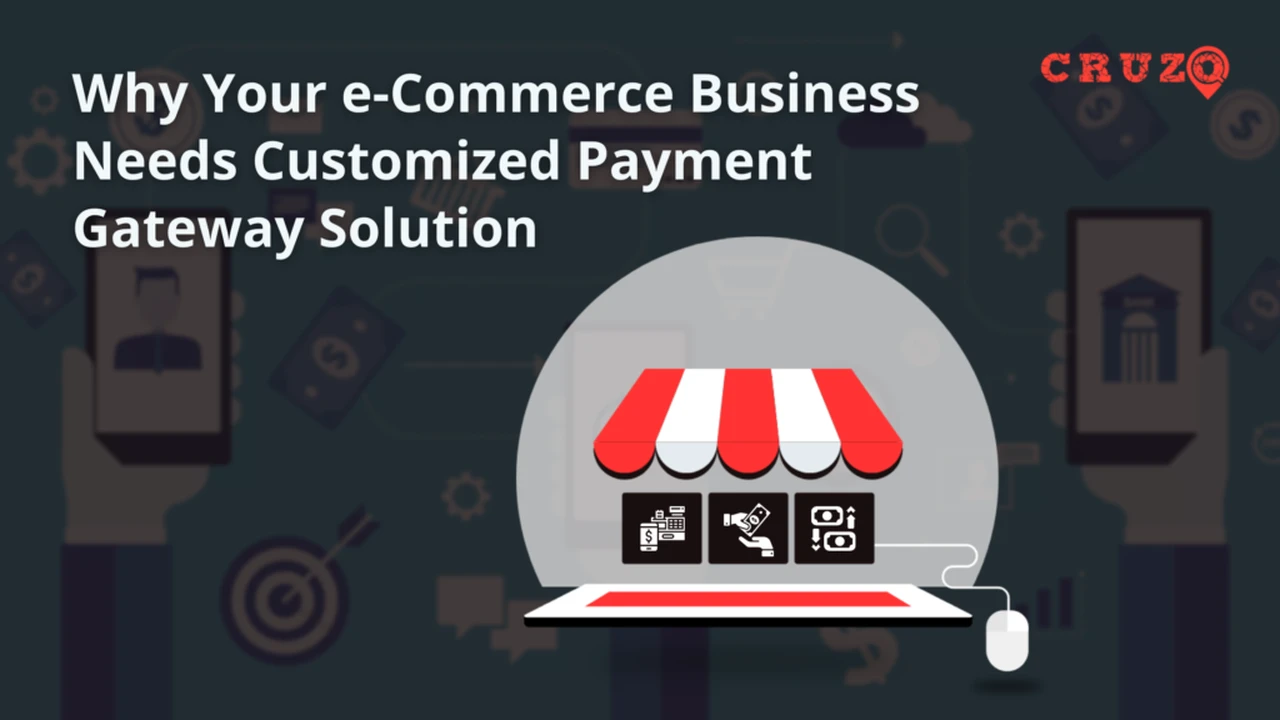Choosing the Right Payment Gateway for Your E-commerce Business in SEA & Mexico
Sample meta description.

Understanding the E-commerce Landscape in Southeast Asia & Mexico Payment Solutions
So, you're diving into the exciting world of e-commerce in Southeast Asia (SEA) and Mexico? Awesome! But before you start counting your profits, let's talk about something crucial: payment gateways. Think of them as the gatekeepers of your online store's money. They handle the whole shebang – processing credit card payments, mobile wallets, and all those other ways people pay online. SEA and Mexico are booming e-commerce markets, but they each have their own unique payment preferences and challenges. What works in Singapore might not fly in Mexico City. So, choosing the right payment gateway is absolutely vital for success.
Why? Well, imagine having a killer product, a beautiful website, and tons of traffic, but potential customers can't pay because their preferred method isn't supported. Frustrating, right? You're basically leaving money on the table. A good payment gateway makes it easy for customers to pay, builds trust, and ultimately boosts your sales.
Key Considerations for Selecting a Payment Gateway in SEA & Mexico: Payment Method Preferences
First things first, let's talk about how people actually *want* to pay. Forget what you think you know. Credit cards are important, sure, but they're not the whole story, especially in SEA. Here's the lowdown:
- Southeast Asia (SEA): Mobile wallets are king! Think GrabPay, GoPay, ShopeePay, and others. Bank transfers are also super popular, especially in countries like Indonesia. Cash on delivery (COD) still exists in some areas, though it's becoming less common. Credit cards are used, but not as much as you might expect. Each country within SEA (Singapore, Malaysia, Indonesia, Thailand, Philippines, Vietnam) has slightly different dominant payment methods. Do your research!
- Mexico: Credit and debit cards are more widely used than in SEA, but cash is still a major player. OXXO payments (paying with a barcode at a convenience store) are huge. Digital wallets like Mercado Pago are also gaining traction. Bank transfers are less common than in SEA.
Supporting the right payment methods is non-negotiable. If you're only accepting credit cards in Indonesia, you're missing out on a massive chunk of the market.
Security & Fraud Prevention: Protecting Your Business and Customers in SEA & Mexico
Security is paramount. Cybercrime is a global issue, and you need a payment gateway that takes it seriously. Look for these features:
- PCI DSS Compliance: This is the gold standard for credit card security. Make sure your gateway is PCI DSS compliant.
- Fraud Detection Tools: The gateway should have built-in tools to detect and prevent fraudulent transactions. This could include things like address verification, CVV checks, and velocity checks (limiting the number of transactions from a single IP address).
- 3D Secure Authentication: This adds an extra layer of security for credit card payments, requiring customers to verify their identity with their bank (e.g., Verified by Visa, Mastercard SecureCode).
- Tokenization: This replaces sensitive credit card data with a non-sensitive token, so you don't have to store the actual card numbers on your servers.
Remember, a data breach can destroy your reputation and cost you a fortune. Invest in security.
Transaction Fees & Pricing Models: Understanding the Costs of Payment Gateways for SEA & Mexico E-commerce
Payment gateways charge fees for processing transactions. These fees can vary widely, so it's important to understand the different pricing models:
- Transaction Fees: A percentage of each transaction, plus a fixed fee (e.g., 2.9% + $0.30 per transaction). This is the most common model.
- Monthly Fees: A fixed monthly fee, regardless of how many transactions you process. This can be a good option if you have a high volume of transactions.
- Setup Fees: A one-time fee to set up your account. Some gateways waive setup fees, while others charge a hefty amount.
- Hidden Fees: Watch out for hidden fees, such as chargeback fees, currency conversion fees, and early termination fees. Read the fine print!
Compare the total cost of ownership for different gateways, taking into account all fees. Don't just focus on the transaction fee. Also, consider currency conversion rates if you're selling in multiple countries.
Integration & Technical Support: Ensuring Seamless Implementation and Ongoing Assistance in SEA & Mexico
How easy is it to integrate the payment gateway with your e-commerce platform? Does it offer pre-built integrations for popular platforms like Shopify, WooCommerce, and Magento? If not, you'll need to hire a developer to build a custom integration, which can be expensive and time-consuming.
Also, consider the quality of technical support. Is it available 24/7? Can you get help in your local language? What's the response time? Good technical support is essential if you run into any problems.
Popular Payment Gateways for E-commerce in Southeast Asia & Mexico: Product Recommendations and Comparisons
Okay, let's get down to specifics. Here are a few popular payment gateways for SEA and Mexico, along with their pros, cons, pricing, and use cases:
Stripe: A Global Powerhouse for E-commerce Payments
Description: Stripe is a well-known global payment gateway that offers a wide range of features and integrations. It's popular for its developer-friendly API and its ability to handle complex payment scenarios.
Pros:
- Excellent API and developer documentation.
- Wide range of features, including subscriptions, recurring payments, and marketplace payments.
- Supports a wide range of currencies and payment methods.
- Good fraud prevention tools.
- Integrates with most popular e-commerce platforms.
Cons:
- Can be more complex to set up than some other gateways.
- Pricing can be higher than some competitors, especially for high-risk businesses.
- Customer support can be slow at times.
Pricing: Varies by country. Generally, it's around 2.9% + $0.30 per transaction.
Use Cases: Best for businesses that need a flexible and powerful payment gateway with a strong API. Suitable for startups to large enterprises.
PayPal: A Trusted Name in Online Payments
Description: PayPal is a household name in online payments, known for its ease of use and its wide acceptance. It's a good option for businesses that want to offer a familiar and trusted payment method to their customers.
Pros:
- Easy to set up and use.
- Widely recognized and trusted by consumers.
- Offers buyer protection and seller protection.
- Supports a wide range of currencies.
- Integrates with most popular e-commerce platforms.
Cons:
- Transaction fees can be higher than some competitors.
- Can be slow to resolve disputes.
- Account holds and freezes can be common.
Pricing: Varies by country. Generally, it's around 3.49% + fixed fee per transaction.
Use Cases: Best for businesses that want to offer a simple and familiar payment method to their customers. Suitable for small to medium-sized businesses.
2Checkout (Verifone): A Global Payment Solution with Local Expertise
Description: 2Checkout (now part of Verifone) is a global payment gateway that specializes in cross-border e-commerce. It offers a wide range of payment methods and currencies, and it provides localized support for businesses selling in different countries.
Pros:
- Supports a wide range of payment methods and currencies.
- Offers localized support in multiple languages.
- Good fraud prevention tools.
- Handles tax and compliance issues for cross-border sales.
Cons:
- Pricing can be higher than some competitors.
- Can be more complex to set up than some other gateways.
- Customer support can be slow at times.
Pricing: Varies by plan. Generally, it's around 3.5% + $0.35 per transaction.
Use Cases: Best for businesses that sell internationally and need a payment gateway that can handle cross-border payments, tax, and compliance issues.
Mercado Pago: The Leading Payment Solution in Latin America
Description: Mercado Pago is the leading payment gateway in Latin America, owned by Mercado Libre (the Amazon of Latin America). It's a great option for businesses that want to target customers in Mexico and other Latin American countries.
Pros:
- Widely used and trusted in Latin America.
- Offers a wide range of payment methods, including credit cards, debit cards, OXXO payments, and Mercado Pago wallet.
- Integrates seamlessly with Mercado Libre.
- Good fraud prevention tools.
Cons:
- Limited availability outside of Latin America.
- Pricing can be higher than some competitors.
- Customer support can be slow at times.
Pricing: Varies by country and plan. Generally, it's around 2.99% to 3.99% + fixed fee per transaction.
Use Cases: Best for businesses that want to sell in Latin America, especially in Mexico. If you're selling on Mercado Libre, it's a must-have.
Xendit: Southeast Asia's Payment Infrastructure
Description: Xendit focuses specifically on Southeast Asia. They provide robust APIs for direct debit, eWallets, virtual accounts and credit cards.
Pros:
- Strong focus on Southeast Asian payment methods.
- Good API Documentation
- Competitive Pricing
Cons:
- Less widely known outside of SEA
- Smaller user base compared to global players
Pricing: Varies by country and payment method. Starting from around 1.5% + fixed fee for some payment types.
Use Cases: Ideal for companies focused exclusively on the Southeast Asian market. Good for businesses needing direct debit and local eWallet integrations.
Comparing Payment Gateways: A Side-by-Side Analysis for E-commerce Success in SEA & Mexico
Here's a quick comparison table to help you make a decision:
| Payment Gateway | Focus Area | Key Payment Methods | Pricing (Approx.) | Best For |
|---|---|---|---|---|
| Stripe | Global | Credit cards, debit cards, various digital wallets | 2.9% + $0.30 | Tech-savvy businesses, startups to enterprises |
| PayPal | Global | Credit cards, debit cards, PayPal balance | 3.49% + fixed fee | Businesses wanting a familiar payment option |
| 2Checkout (Verifone) | Global, Cross-border | Credit cards, debit cards, localized payment methods | 3.5% + $0.35 | International businesses needing cross-border solutions |
| Mercado Pago | Latin America | Credit cards, debit cards, OXXO, Mercado Pago wallet | 2.99%-3.99% + fixed fee | Businesses targeting Latin American markets |
| Xendit | Southeast Asia | eWallets, Direct Debit, Virtual Accounts, Credit Cards | Starting from 1.5% + fixed fee | SEA focused businesses needing local payment options |
Real-World Examples: How Businesses Use Payment Gateways in SEA & Mexico
Let's look at some examples of how businesses are using these payment gateways in the real world:
- A Singaporean e-commerce store selling fashion apparel uses Stripe to process credit card payments and GrabPay transactions. They chose Stripe for its developer-friendly API and its ability to handle recurring subscriptions.
- A Mexican online retailer selling electronics uses Mercado Pago to accept credit card payments, OXXO payments, and Mercado Pago wallet payments. They chose Mercado Pago because it's the most popular payment gateway in Mexico and it integrates seamlessly with Mercado Libre.
- A Malaysian travel booking website uses 2Checkout to process payments from customers around the world. They chose 2Checkout because it supports a wide range of currencies and payment methods, and it handles tax and compliance issues for cross-border sales.
- An Indonesian online learning platform uses Xendit to process payments via virtual accounts and GoPay. They chose Xendit to cater to the popular payment preferences within Indonesia.
Mobile Optimization & User Experience: Creating a Seamless Payment Flow on Mobile Devices in SEA & Mexico
Mobile is huge in both SEA and Mexico. Your payment gateway needs to be optimized for mobile devices. This means:
- Responsive Design: The payment page should look good on all screen sizes.
- Mobile Wallets: Support mobile wallets like Apple Pay, Google Pay, GrabPay, and GoPay.
- One-Click Payments: Allow customers to save their payment information for faster checkout.
- Clear Call-to-Actions: Make it easy for customers to complete the payment process.
A clunky or confusing mobile payment experience can kill your conversion rate. Make it smooth and easy.
Chargebacks & Disputes: Managing Payment Disputes and Minimizing Losses in SEA & Mexico
Chargebacks are a fact of life in e-commerce. A chargeback occurs when a customer disputes a transaction with their bank or credit card company. You need a payment gateway that can help you manage chargebacks and minimize your losses.
Look for these features:
- Chargeback Prevention Tools: The gateway should have tools to help you prevent chargebacks, such as address verification and fraud detection.
- Chargeback Management System: The gateway should have a system for managing chargebacks, including the ability to submit evidence to dispute the chargeback.
- Chargeback Insurance: Some gateways offer chargeback insurance, which can help you cover the costs of chargebacks.
Respond to chargebacks promptly and provide as much evidence as possible to support your case.
Testing and Optimization: Continuously Improving Your Payment Gateway Performance in SEA & Mexico
Don't just set it and forget it. Continuously test and optimize your payment gateway to improve its performance.
Here are some things you can test:
- Different Payment Methods: Try adding or removing different payment methods to see what works best for your customers.
- Checkout Flow: Experiment with different checkout flows to see if you can reduce cart abandonment.
- Pricing: Negotiate better pricing with your payment gateway.
- A/B Testing: Use A/B testing to compare different payment gateway configurations.
Data is your friend. Track your key metrics (conversion rate, chargeback rate, etc.) and use that data to make informed decisions.
The Future of Payments in SEA & Mexico: Emerging Trends and Technologies
The payment landscape is constantly evolving. Here are some emerging trends and technologies to watch out for:
- Buy Now, Pay Later (BNPL): BNPL services are becoming increasingly popular in SEA and Mexico. These services allow customers to split their payments into installments.
- Cryptocurrencies: While still niche, cryptocurrencies are gaining traction in some areas. Consider accepting cryptocurrencies if your target market is tech-savvy.
- Biometric Authentication: Biometric authentication (fingerprint scanning, facial recognition) is becoming more common for online payments.
- Real-Time Payments: Real-time payments (instant bank transfers) are becoming more popular in some countries.
Stay up-to-date on the latest trends and technologies to ensure that you're offering the best possible payment experience to your customers.
:max_bytes(150000):strip_icc()/277019-baked-pork-chops-with-cream-of-mushroom-soup-DDMFS-beauty-4x3-BG-7505-5762b731cf30447d9cbbbbbf387beafa.jpg)






